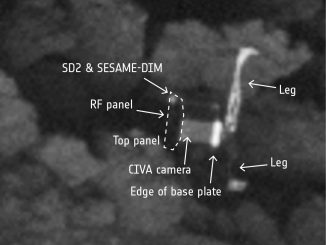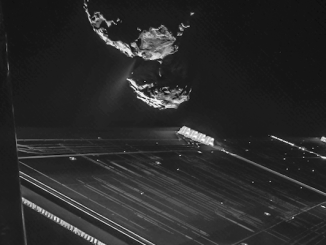The lander project manager Stephan Ulamec says tremendous science has been collected during Philae’s short time on the surface but battery life is now limited and it is unlikely to last much longer.
Related Articles

News
Philae found! Rosetta’s lander wedged in cometary crevice
Less than a month before the end of the mission, Rosetta’s high-resolution camera has revealed the Philae lander wedged into a dark crack on Comet 67P/Churyumov–Gerasimenko. The images were taken on 2 September by the OSIRIS narrow-angle camera as the orbiter came within 2.7 kilometres of the comet’s surface.


